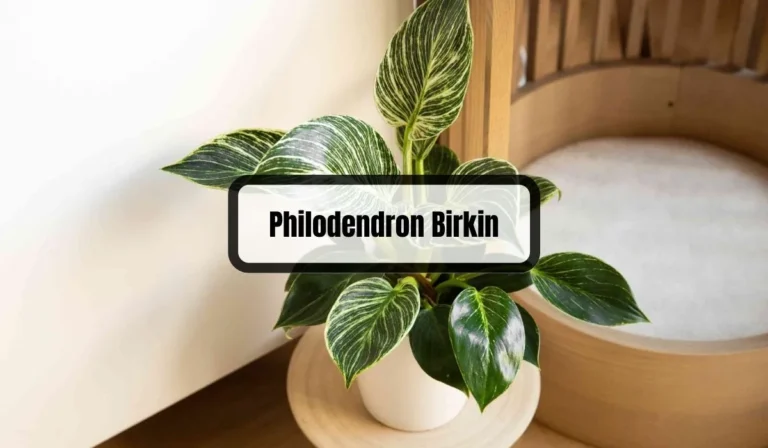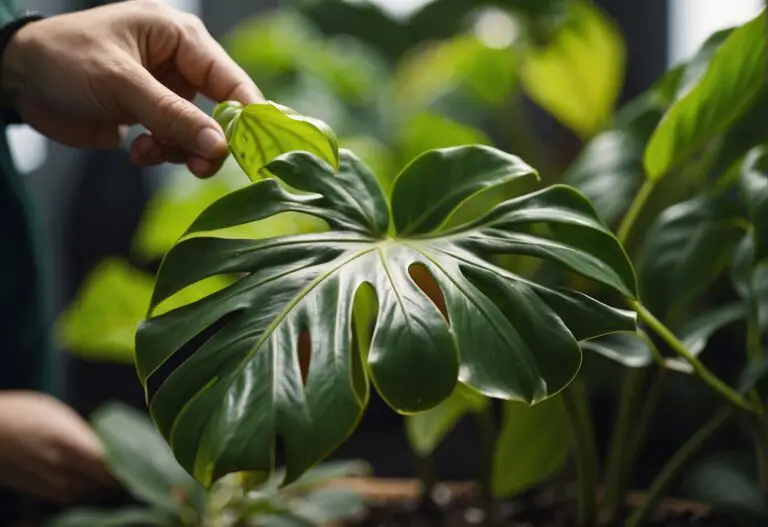Unlocking the Beauty of Red Anderson Philodendron: Care and Tips for Vibrant Plants
From Louise: I’m a gardening enthusiast, specializing in plant care and flower knowledge. I’m here to share my expertise and help with your gardening questions. Feel free to ask about Philodendron Plant care – I’ll respond within 24 hours!
Are you looking for a beautiful and easy-to-care-for houseplant? Look no further than the Red Anderson Philodendron! With its stunning deep red leaves and glossy texture, this vine is sure to add a pop of color to any room. But what do you need to know to keep your Red Anderson Philodendron thriving? Read on for our top care tips.
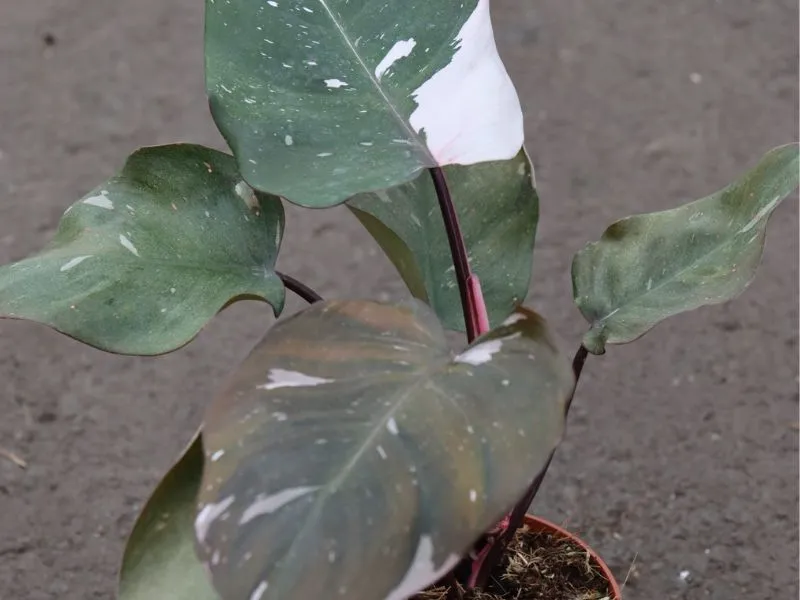
First, it’s important to understand the Red Anderson Philodendron. This plant is a vine that can grow up to 10 feet long, making it a great choice for hanging baskets or training up a trellis. Its leaves start out bright red and gradually darken as they mature.
While it’s relatively easy to care for, there are a few things you need to keep in mind to ensure your Red Anderson Philodendron stays healthy and happy.
Key Takeaways
- The Red Anderson Philodendron is a stunning vine with deep red leaves and a glossy texture.
- This plant is relatively easy to care for, but it’s important to provide it with the right conditions for growth.
- To keep your Red Anderson Philodendron thriving, make sure to provide it with bright, indirect light, well-draining soil, and regular watering.
Understanding Red Anderson Philodendron
If you’re looking for a plant that’s both beautiful and easy to care for, the Red Anderson Philodendron is an excellent choice. This stunning plant is native to South America and is a member of the Araceae family. It’s closely related to the Philodendron hederaceum and gets its name from the Greek words “philos” and “dendron,” which mean “love” and “tree,” respectively.
One of the most striking features of the Red Anderson Philodendron is its deep red, almost maroon-colored leaves. The leaves are large, typically measuring 6-12 inches long and 3-6 inches wide, with a glossy texture. The new leaves emerge a bright red color before gradually darkening as they mature. This slow-growing climber loves bright, indirect sunlight and can be trained to climb a trellis or allowed to trail down from a hanging basket.
Caring for your Red Anderson Philodendron is simple and straightforward. Here are some tips and tricks to keep your plant healthy and thriving:
- Light: The Red Anderson Philodendron loves bright, indirect sunlight. Place your plant near a window that gets plenty of light, but avoid direct sunlight, which can scorch the leaves.
- Water: Water your plant when the top inch of soil feels dry to the touch. Be careful not to overwater, as this can lead to root rot. It’s better to underwater than overwater your Red Anderson Philodendron.
- Humidity: This plant loves humidity and will appreciate being misted with water regularly. You can also place a tray of water near your plant to increase humidity levels.
- Soil: Use a well-draining soil mix that’s rich in organic matter. A mix of peat moss, perlite, and vermiculite is an excellent choice for your Red Anderson Philodendron.
- Fertilizer: Feed your plant once a month during the growing season with a balanced, water-soluble fertilizer. Follow the instructions on the fertilizer package for best results.
With a little bit of care and attention, your Red Anderson Philodendron will reward you with its stunning beauty and easy-going nature.
Red Anderson Philodendron Care
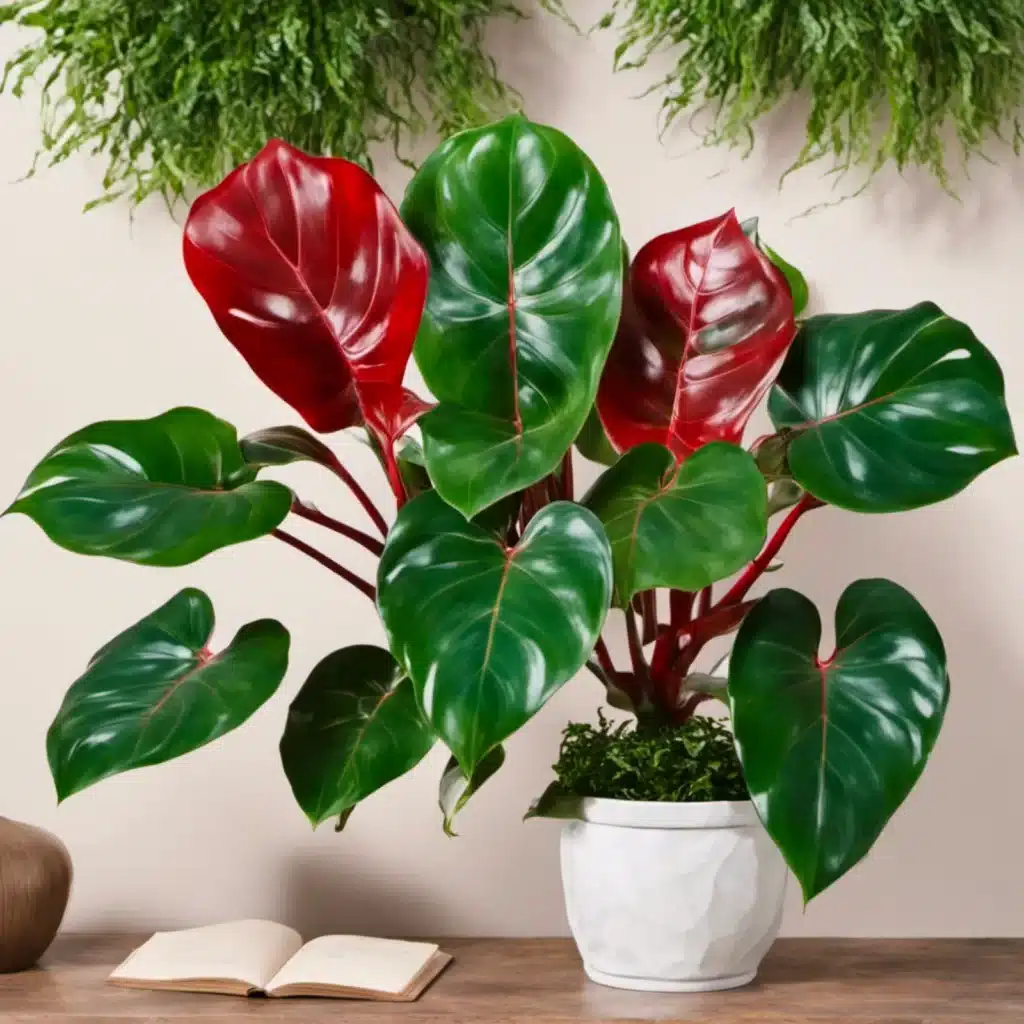
So, you’ve decided to add a Red Anderson Philodendron to your collection of indoor plants? Congratulations! This beautiful plant boasts deep red, almost maroon-colored leaves that are sure to catch your eye.
With its glossy texture and large size, this vine is a stunning addition to any room. Now, let’s talk about how to care for your Red Anderson Philodendron.
Light
One of the keys to keeping your Red Anderson Philodendron happy and healthy is to provide it with the right amount of light. This plant prefers bright, indirect light. Direct sunlight can burn the leaves, so it’s best to place it in a spot where it can receive filtered light or partial shade.
If you notice that your plant’s leaves are turning yellow or brown, it may be getting too much light. On the other hand, if the leaves are small and the stems are elongated, it may not be getting enough light.
Water
When it comes to watering your Red Anderson Philodendron, it’s important to strike the right balance. Overwatering can lead to root rot, while underwatering can cause the leaves to wilt and turn brown.
As a general rule, water your plant when the top inch of soil feels dry to the touch. Be sure to water thoroughly, allowing the water to drain out of the bottom of the pot. If your plant is sitting in water for too long, it can lead to root rot.
Soil
Red Anderson Philodendrons prefer well-draining soil that is rich in organic matter. A mix of peat moss, perlite, and potting soil is a good choice. Avoid using heavy soils that retain too much moisture, as this can lead to root rot.
Temperature and Humidity
Red Anderson Philodendrons thrive in warm, humid environments. Ideally, the temperature should be between 65 and 80 degrees Fahrenheit. If the air is too dry, the leaves may start to curl or turn brown around the edges.
To increase humidity, you can use a humidifier, place a tray of water near the plant, or mist the leaves with water.
Fertilizer
During the growing season (spring and summer), you can fertilize your Red Anderson Philodendron every two weeks with a balanced, water-soluble fertilizer. Be sure to follow the instructions on the package, as over-fertilizing can damage the plant.
Pruning
Regular pruning can help keep your Red Anderson Philodendron looking its best. You can remove any yellow or brown leaves, as well as any stems that are growing in the wrong direction. If your plant is getting too large, you can also trim it back to control its size.
Ideal Conditions for Growth
If you want your Red Anderson Philodendron to thrive, you need to provide it with the ideal conditions for growth. Here are the key factors to consider:
Light Requirements
Red Anderson Philodendron plants need bright, indirect light to grow well. Direct sunlight can burn the leaves and cause damage.
Aim to place your plant near a window that receives plenty of bright, indirect light, but avoid placing it in direct sunlight.
Watering Needs
The Red Anderson Philodendron is a drought-tolerant plant, so it doesn’t require frequent watering. Overwatering can cause root rot, so it’s important to let the soil dry out between waterings.
Water your plant when the top inch of soil feels dry to the touch. Be sure to use a well-draining soil mix to prevent water from accumulating in the pot.
Soil Preferences
The Red Anderson Philodendron prefers a well-draining soil mix that is rich in organic matter.
You can use a mix of orchid bark, perlite, and peat moss to create a soil mix that will provide your plant with the nutrients it needs to thrive. Make sure the soil is slightly acidic, with a pH between 5.5 and 7.0.
Temperature and Humidity
The Red Anderson Philodendron prefers warm temperatures between 65 and 85 degrees Fahrenheit. Keep your plant away from cold drafts and air conditioning vents, as these can cause stress and damage to the leaves. The plant also prefers high humidity levels, so consider using a humidifier or placing a tray of water near the plant to increase humidity levels.
By providing your Red Anderson Philodendron with the ideal conditions for growth, you can ensure that it will thrive and remain healthy for years to come.
Remember to check the soil moisture regularly, and adjust the watering schedule as needed to prevent overwatering. With a little care and attention, your Red Anderson Philodendron will reward you with its stunning beauty and vibrant colors.
Common Problems and Solutions
As with any plant, the Red Anderson Philodendron may encounter some problems along the way. Don’t worry, we’ve got you covered with some solutions to the most common issues.
Yellowing Leaves
If you notice your Red Anderson Philodendron’s leaves turning yellow, this could be a sign of overwatering. Check the soil to make sure it’s not waterlogged and adjust your watering schedule accordingly. It’s important to let the top inch of soil dry out between waterings. If the soil is too wet, the roots may begin to rot, causing the leaves to turn yellow.
Another possible cause of yellowing leaves is lack of nutrients. Make sure you’re fertilizing your plant regularly with a balanced fertilizer. If the leaves are yellowing and falling off, it could also be a sign of natural aging. In this case, simply remove the yellow leaves to encourage new growth.
Wilting or Drooping
If your Red Anderson Philodendron’s leaves are wilting or drooping, it may be a sign of underwatering. Check the soil to make sure it’s not bone dry and adjust your watering schedule accordingly. It’s important to keep the soil consistently moist, but not waterlogged.
Another possible cause of wilting or drooping leaves is exposure to direct sunlight. Red Anderson Philodendrons prefer bright indirect light, so make sure your plant is not in direct sunlight for extended periods of time.
Pests and Diseases
Red Anderson Philodendrons are generally quite hardy and resistant to pests and diseases. However, there are a few common issues to watch out for.
One of the most common pests to affect philodendrons is spider mites. These tiny pests can be difficult to spot, but you may notice webbing on the leaves or tiny black dots (the mites themselves) on the undersides of the leaves. To get rid of spider mites, simply spray your plant with a mixture of water and dish soap.
Another common issue is fungal infections, which can cause brown spots on the leaves. To prevent fungal infections, make sure your plant is not overcrowded and has plenty of air circulation. If you do notice brown spots on the leaves, simply remove the affected leaves and adjust your watering schedule to prevent the soil from becoming too wet.
Overall, Red Anderson Philodendrons are relatively low-maintenance plants that are easy to care for. By following these tips and keeping an eye out for any potential issues, you can help ensure that your plant stays healthy and beautiful for years to come.
Propagating Red Anderson Philodendron
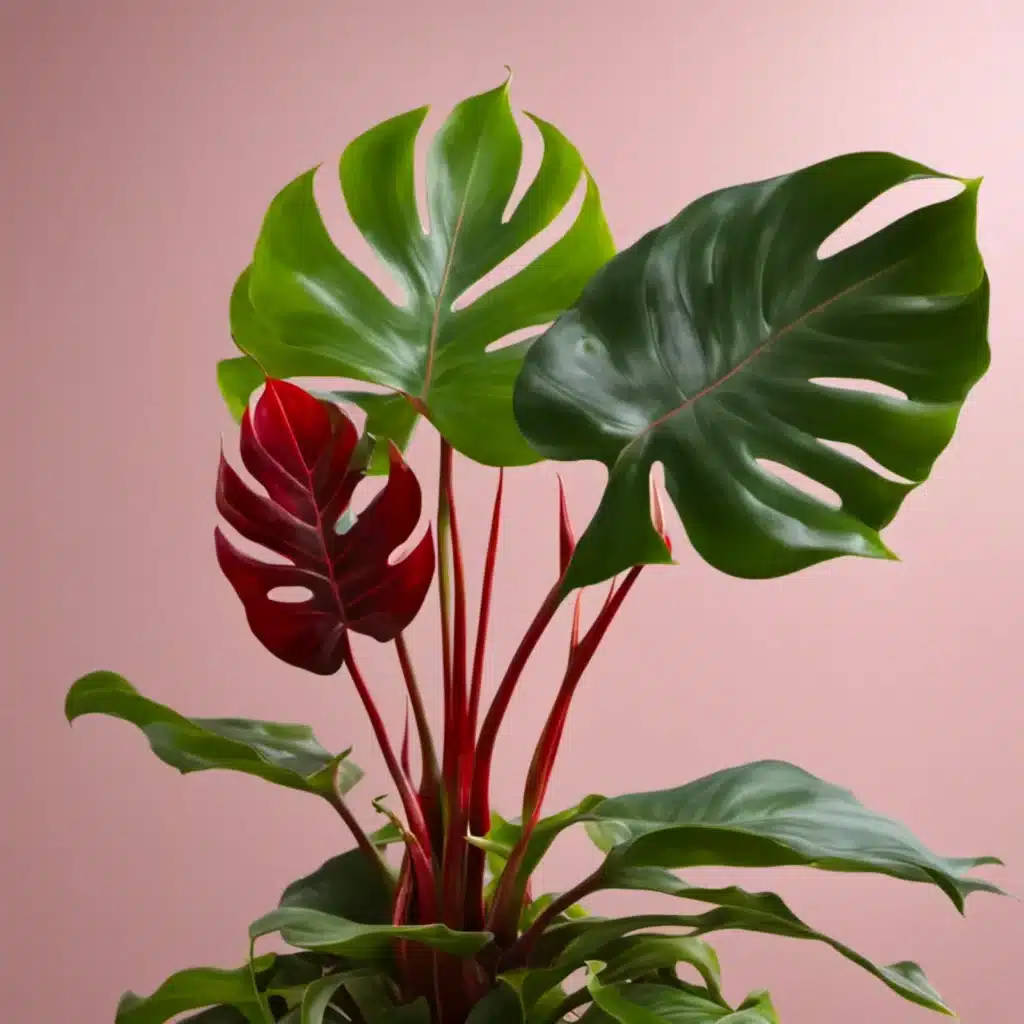
If you want to propagate your Red Anderson Philodendron, there are a few methods you can try. Here are some options:
Stem Cuttings
One of the easiest ways to propagate your Red Anderson Philodendron is through stem cuttings. Here’s how to do it:
- Choose a healthy stem with at least one node (the point where a leaf attaches to the stem).
- Cut the stem just below the node using a clean, sharp knife or scissors.
- Remove the leaves from the bottom 2-3 inches of the stem.
- Dip the cut end of the stem in rooting hormone (optional).
- Plant the stem in a pot with moist potting soil, burying the bottom 2-3 inches of the stem.
- Cover the pot with a plastic bag to create a humid environment.
- Place the pot in a bright, indirect light.
- Keep the soil moist but not waterlogged.
- After a few weeks, the stem should start to develop roots. You can gently tug on the stem to see if it has rooted yet.
Offshoot and Root Division
If your Red Anderson Philodendron has offshoots or multiple stems, you can divide the plant to create new ones. Here’s how to do it:
- Carefully remove the plant from its pot and gently shake off excess soil.
- Look for sections of the plant that have their own roots and leaves.
- Use a clean, sharp knife or scissors to separate these sections from the main plant.
- Plant each section in its own pot with fresh potting soil.
- Water the new plants thoroughly and place them in a bright, indirect light.
- Keep the soil moist but not waterlogged.
Air Layering
Air layering is a more advanced propagation technique, but it can be a good option if you want to create a larger plant. Here’s how to do it:
- Choose a healthy stem on your Red Anderson Philodendron.
- Make a small cut in the stem, about 1/3 of the way through.
- Wrap the cut section with damp sphagnum moss and cover it with plastic wrap to hold the moss in place.
- Wait a few weeks for roots to develop in the moss.
- Cut the stem below the rooted section and plant it in its own pot with fresh potting soil.
- Water the new plant thoroughly and place it in a bright, indirect light.
- Keep the soil moist but not waterlogged.
Overall, propagating your Red Anderson Philodendron can be a fun and rewarding way to expand your plant collection. With a little patience and care, you can create new plants that will bring you joy for years to come.
Frequently Asked Questions
What is the scientific name for Red Anderson philodendron?
The scientific name for Red Anderson philodendron is Philodendron ‘Anderson’s Red’. It is a hybrid plant that is a cross between Philodendron ‘Red Emerald’ and Philodendron ‘Glorius’.
How do you care for a variegated philodendron?
Variegated philodendrons, like Red Anderson, require bright, indirect light and well-draining soil. Water the plant when the top inch of soil is dry to the touch, and mist the leaves often to increase humidity. Fertilize the plant monthly during the growing season with a balanced fertilizer.
How do you propagate Red Anderson philodendron?
Red Anderson philodendron can be propagated through stem cuttings. Cut a stem section with at least one node and place it in a jar of water or moist soil.
Keep the cutting in a warm, bright location and change the water or moisten the soil as needed. Once roots have formed, transplant the cutting into a pot with well-draining soil.
What are the differences between Red Anderson and PPP philodendron?
Red Anderson philodendron and Pink Princess philodendron (PPP) are both hybrid plants with unique coloring. Red Anderson has deep red, almost maroon-colored leaves, while PPP has variegated pink and green leaves.
Additionally, Red Anderson is a larger plant that can grow up to 3 feet tall, while PPP is a smaller plant that typically reaches 1-2 feet in height.
What are the unique characteristics of Strawberry Shake and White Knight philodendron?
Strawberry Shake philodendron is a hybrid plant with pink and green variegated leaves and a compact growth habit.
White Knight philodendron, on the other hand, has large, dark green leaves with white veins and a climbing growth habit. Both plants require bright, indirect light and well-draining soil.
What are some tips for keeping a Pink Princess philodendron healthy?
To keep a Pink Princess philodendron healthy, provide it with bright, indirect light and well-draining soil. Water the plant when the top inch of soil is dry to the touch, and mist the leaves often to increase humidity.
Fertilize the plant monthly during the growing season with a balanced fertilizer, and prune any leggy or yellowing growth to encourage bushier growth.
Conclusion
Congratulations! You now know everything you need to know about taking care of your Red Anderson Philodendron. This beautiful plant is a great addition to any home or office, and with a little bit of care, it will thrive and grow for years to come.
Remember to keep your Red Anderson Philodendron in bright, indirect light and avoid direct sunlight, which can burn its leaves. Water your plant thoroughly, allowing the top inch of soil to dry out between waterings. Be careful not to overwater, as this can lead to root rot.
Humidity is also important for your Red Anderson Philodendron. If you live in a dry climate, consider using a humidifier or placing a tray of water near your plant to increase the humidity in the air.
When it comes to fertilizing your Red Anderson Philodendron, use a balanced fertilizer once a month during the growing season. Prune your plant as needed to keep it looking neat and tidy, and provide support if necessary to help it grow upright.
With these simple care tips, your Red Anderson Philodendron will be a beautiful and healthy addition to your home or office. Enjoy the beauty and benefits of this wonderful plant!


